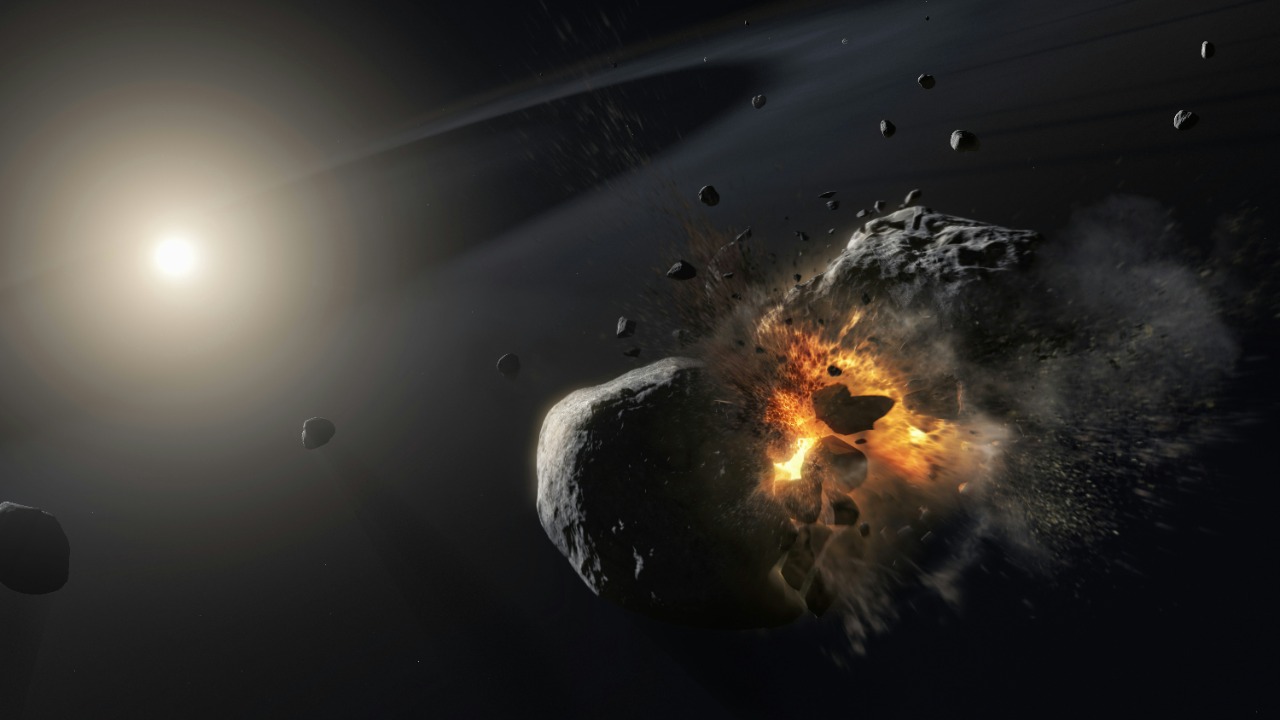
Astronomers have recently identified a near-Earth asteroid that had been hidden in the sun’s glare, marking a significant advancement in planetary defense. This discovery is crucial as the asteroid is classified as a ‘planet killer’ due to its size and potential threat to Earth in the distant future. The challenges of detecting such objects, which evade standard telescopic observations, highlight the ongoing efforts to improve our understanding and tracking of these celestial bodies.
Challenges in Detecting Sun-Hidden Asteroids
Detecting asteroids that lurk in the sun’s glare presents significant technical challenges. These objects evade standard telescopic observations because the sun’s brightness obscures them, making it difficult for astronomers to spot them using conventional methods. As reported by CNN, the intense light from the sun can blind telescopes, preventing the detection of potentially hazardous asteroids. This limitation necessitates the development of innovative methods to uncover these elusive bodies.
To address these challenges, astronomers have employed specialized surveys and advanced technologies. According to Popular Mechanics, these efforts include using infrared telescopes and space-based observatories that can peer into the sun’s glare, revealing asteroids that were previously hidden. These methods have proven effective in identifying asteroids that orbit close to the sun, filling a critical gap in our current monitoring systems.
The recent discovery of a hidden near-Earth asteroid, as detailed by ScienceAlert, underscores the importance of these advanced detection techniques. This find highlights the vulnerabilities in our current systems and the need for continuous improvements to ensure that potentially dangerous asteroids are identified before they pose a threat to Earth.
Characteristics of the Newly Discovered Asteroid
The newly discovered asteroid is classified as a near-Earth object with the potential to cause significant damage due to its size and orbit. As reported by 3DVF, this ‘planet killer’ asteroid has a trajectory that could potentially intersect with Earth’s orbit in the distant future. Its classification underscores the importance of monitoring such objects closely to assess their threat level accurately.
This asteroid remained undetected for so long due to its position in the sun’s glare, which effectively camouflaged it from traditional observation methods. The announcement by ScienceAlert highlights how its unique position allowed it to evade detection until now. This discovery emphasizes the need for continued vigilance and technological advancements in asteroid detection.
The potential for collision with Earth, as discussed in CBS News, is a reminder of the stakes involved in monitoring these celestial bodies. While the threat may not be immediate, understanding the characteristics and trajectories of such asteroids is crucial for developing effective planetary defense strategies.
Implications for Earth’s Future Safety
The discovery of this massive asteroid has significant implications for Earth’s future safety. As detailed by 3DVF, the asteroid’s potential threat level underscores the importance of continuous monitoring and preparedness. While the risk of impact may be distant, the potential consequences of such an event necessitate proactive measures to mitigate any future threats.
This discovery also highlights the vulnerabilities in global asteroid tracking systems. The challenges of spotting asteroids hidden in the sun’s glare, as reported by CNN, reveal gaps in our current capabilities. Addressing these gaps is essential to ensure that potentially hazardous asteroids are detected and tracked effectively.
The broader population of planet killer asteroids lurking behind the sun’s glare, as covered by Popular Mechanics, further emphasizes the need for enhanced detection technologies. Understanding the full scope of these hidden threats is crucial for developing comprehensive strategies to protect Earth from potential impacts.
Advances in Asteroid Detection Technology
Recent technological breakthroughs have played a crucial role in revealing hidden asteroids, as demonstrated by the 2025 detection of an asteroid in the sun’s glare. This discovery, highlighted by ScienceAlert, showcases the advancements in detection methods that are essential for identifying asteroids that were previously undetectable.
Efforts in 2022 to identify planet killers through glare-penetrating observations, as reported by CBS News, laid the groundwork for these advancements. These early efforts demonstrated the potential of new technologies to overcome the challenges posed by the sun’s glare, paving the way for more effective asteroid detection strategies.
Ongoing improvements in detection technologies, prompted by recent discoveries, are crucial for enhancing our ability to identify and track sun-lurking threats. As noted by 3DVF, these advancements are vital for ensuring that potentially hazardous asteroids are detected in time to implement effective planetary defense measures. The continued development of these technologies will be essential for safeguarding Earth from future asteroid impacts.